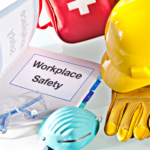An EpiPen is a life-saving device used to treat severe allergic reactions, known as anaphylaxis. Whether you are dealing with food allergies, insect stings, or a sensitivity to medications, knowing how and when to use an EpiPen can be the difference between life and death. At Arise Safety and CPR, we understand the importance of comprehensive first aid training, which is why we include EpiPen training in our first aid courses. In this blog post, we’ll explore everything you need to know about EpiPens—from who needs one to Indiana’s laws surrounding their use and access.
What is an EpiPen and How Does it Work?
An EpiPen is an auto-injector containing a dose of epinephrine, a medication that quickly reverses the symptoms of anaphylaxis by constricting blood vessels and opening airways. This rapid response is critical in preventing a life-threatening situation, especially in emergencies where every second counts.
Who Needs an EpiPen?
Anyone with a known risk of severe allergic reactions should have access to an EpiPen. Common triggers include:
- Food allergies (e.g., peanuts, shellfish, milk)
- Insect stings (e.g., bee or wasp stings)
- Medications (e.g., penicillin or certain vaccines)
- Latex allergies
People with a history of anaphylaxis or who have been prescribed an EpiPen should carry one at all times. Additionally, children, school staff, and employees in environments where allergens may be present should also be familiar with EpiPen use.
Signs and Symptoms of Anaphylaxis
It’s essential to recognize the symptoms of anaphylaxis, which can develop rapidly and become severe within minutes. These symptoms include:
- Difficulty breathing or wheezing
- Swelling of the face, throat, or tongue
- Hives, itching, or pale skin
- A drop in blood pressure (causing dizziness or fainting)
- Abdominal pain, vomiting, or diarrhea
- Tightness in the chest or a sense of impending doom
If any of these symptoms are present, an EpiPen should be administered immediately, followed by calling emergency services.
How to Use an EpiPen
Knowing how to use an EpiPen can save lives. Here are the general steps to follow:
- Remove the EpiPen from its case and check the expiration date to ensure it is safe to use.
- Remove the safety cap (usually a yellow or orange cap) from the end of the device.
- Place the tip of the EpiPen against the outer thigh (it can be injected through clothing).
- Firmly press the EpiPen against the thigh until you hear a click. This indicates that the needle has been activated and the epinephrine is being injected.
- Hold the EpiPen in place for 3 seconds to ensure the full dose is delivered.
- Remove the device and massage the injection site for 10 seconds.
- Call 911 or seek emergency medical help immediately, even if the symptoms begin to subside. A second dose of epinephrine may be required.
Laws in Indiana Regarding EpiPens
In Indiana, there are specific laws governing the use, access, and availability of EpiPens. Here are some important regulations to know:
Who Can Use an EpiPen in Indiana?
While EpiPens are prescription medications, Indiana law allows non-medical personnel, such as school staff and workplace employees, to administer an EpiPen in the event of an emergency. Teachers, administrators, and even students with a prescription for an EpiPen can carry and use the device in schools. There are protections in place for individuals acting in good faith to administer epinephrine.
EpiPens in Schools
Indiana law requires that all public and private schools maintain a stock of EpiPens for emergency use. This is crucial for ensuring that if a student or staff member experiences an allergic reaction, an EpiPen is readily available. In addition, school staff members are trained to recognize the signs of anaphylaxis and are authorized to administer an EpiPen if necessary.
EpiPens in the Workplace
Employers in Indiana are also encouraged to have a stock of EpiPens in the workplace, especially in industries where employees may be at risk of exposure to allergens. Workers who have known allergies should be allowed to carry their EpiPens with them at all times. In workplaces, it’s essential that co-workers are trained on how to use an EpiPen in an emergency.
EpiPen Training with Arise Safety and CPR
At Arise Safety and CPR, we believe that education and preparation are key to saving lives. Our first aid and CPR training programs include vital instruction on how to recognize anaphylaxis and administer an EpiPen correctly. This training is crucial for anyone who works with children, has allergies, or is in an environment where allergens may be present.
In addition to EpiPen training, our courses cover:
- CPR and AED use
- Basic first aid skills
- Choking rescue techniques
- How to respond to medical emergencies effectively
Whether you’re a teacher, workplace manager, or simply someone looking to be prepared in an emergency, our comprehensive training ensures that you can act confidently and competently when faced with an allergic reaction.
Conclusion
EpiPens are life-saving tools, but understanding when and how to use them is essential. Whether in schools, workplaces, or homes, having the knowledge and confidence to act can prevent a tragedy. At Arise Safety and CPR, we are committed to providing the training that empowers individuals to respond to emergencies, including anaphylaxis, with the right tools and the right knowledge. If you’re interested in taking an EpiPen training course or learning more about our first aid programs, contact us today to get started!
To register for a class check out our Class Schedule.
To get your employees or organization training click here.





